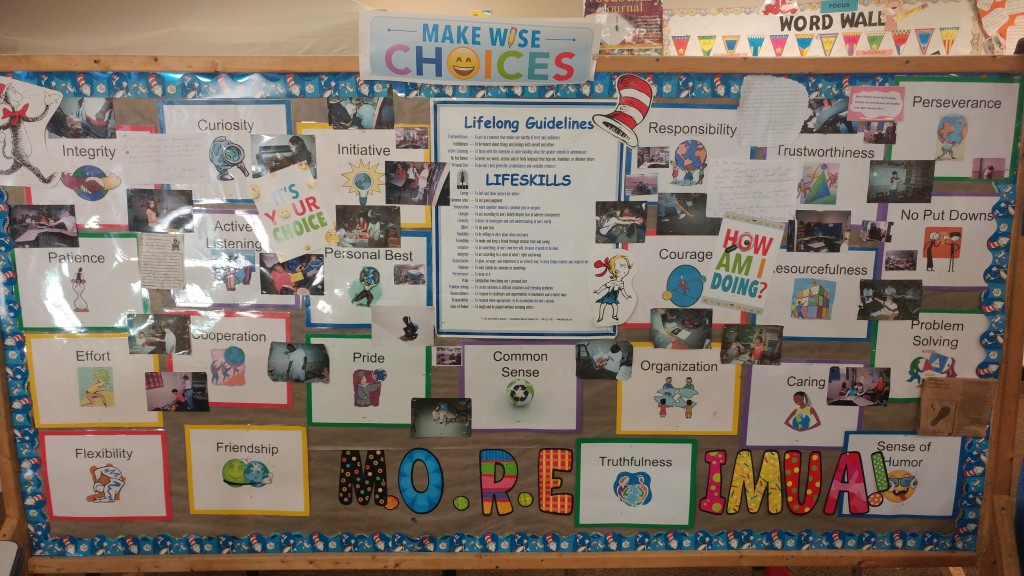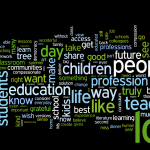In these turbulent times, I was really inspired by the Az K-12 Homeroom article entitled, “Spreading Kindness in the Classroom.” Now, more than ever, teaching our young people civility inside and outside of the classroom is paramount. Throughout my many years of teaching, I have always strived to create a classroom culture of discovery for learning, respect for one another and a love for humanity. We can help our scholars feel a sense of community in the classroom by embedding kindness in every aspect of classroom life, especially in our classroom expectations. When students feel safe and secure in the classroom, it can lead to a lifelong hunger for knowledge, students who feel safe taking educational risks, and more importantly, scholars who grow up to become responsible, productive, caring adults.
As teachers, we understand that optimal learning is driven by curiosity, which leads to exploration, innovation, and mastery. The more our scholars experience this cycle of optimal learning, the more it creates lifelong excitement and love of learning. Unfortunately, in this day and age, it’s quite challenging for our young people to reach this type of learning utopia. Our scholars carry heavy burdens and real stresses with them to school each day. The love of learning can be hindered by these burdens and stresses. For our scholars, under threat of any kind — hunger, pain, loss, shame, confusion, or too much, too new or too fast — they will respond in ways to keep them safe. Their minds will focus only on the information that is, at that instant, critical for survival. Stress destroys curiosity and inhibits exploration. This is where a caring and nurturing classroom environment can have the greatest impact.
In the Homeroom article, the author writes, “Educators can play a huge role in alleviating these emotional burdens by creating an environment that is safe and welcoming for all… that’s just the beginning. Creating a culture of kindness starts with everyday teachable moments that help students change their perceptions of one another and relate to both you and their peers.”
The best way to promote kindness and caring behaviors in our classrooms is to model them. When we show our scholars what it looks like and sounds like to be kind, there is a far greater chance they will repeat those modeled behaviors. It is also significant to remember that our students watch our behaviors all the time and listen to everything we say! I believe in teaching character education; however, I also firmly believe fundamental caring behaviors and kindness are more often “caught” than they are “taught” in the classroom. For years now, I have taken pictures of my students getting “caught in the act” of kindness, and then I display their acts of kindness on our classroom bulletin board. My young scholars absolutely love this type of recognition, and they too will share when they see their classmates doing acts of kindness inside and outside of the classroom walls. My substitute teachers have even joined in on the act and have added their “kindness notes” to the board!
Creating a culture of kindness in the classroom covers multiple areas of society that our scholars will face. The skills we teach in this type of classroom will help our scholars with the difficult task of coping in our divisive world right now. These skills include showing compassion, empathy, listening skills, anger management, coping tools, personal responsibility, and respect for diversity.
Examining the world we are currently living in, is there no greater work for teachers then nurturing kindness, compassion, and empathy in our young people?
I believe one of the most crucial roles educators have is to teach, model and reinforce respect, compassion, kindness, and other prosocial skills. Doing so builds a school culture where students feel more connected to their teachers and to their peers. It leads to greater emotional well-being for students and teachers alike. It has the potential to create a fundamental shift in school climate—a tipping point at which violence, racism, bullying, and hatred become a rarity.
Much has been written about social and emotional learning in the classroom. ASCD has published a really great article entitled, “Social-Emotional Learning and Academics: Better Together.” The author writes, “Instead of viewing social and emotional learning as tangential—something to fit in around the edges of the curriculum—we should treat it as an integral part of our daily teaching for all students.”
There are so many resources to help bring kindness into your classroom. The Random Acts of Kindness Foundation has an excellent website for teachers that include lessons, videos, and kindness ideas.
How are you promoting kindness in your classroom? Share your ideas and thoughts below.










